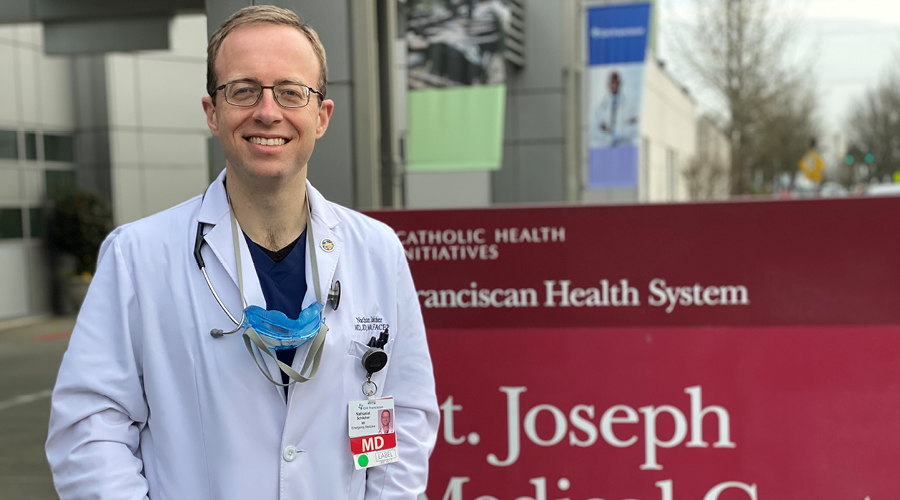By Nathan Schlicher, MD, JD, MBA, Regional Medical Director of Quality Assurance and Associate Director of Litigation Support
The opioid epidemic continues to strain the American people and healthcare system despite years of work to reduce over-prescribing. Throughout the pandemic, the number of opioid-related overdoses increased by an estimated 28.5% from April 2020 to April 2021. While medicine became engulfed in the pandemic, this data shed light on the fact that the opioid epidemic would not easily subside. A need to re-double our efforts on better opioid prescribing techniques has become ever clearer as we rebuild.
Identifying Gaps in Opioid Prescribing Techniques
Experts estimate that upwards of 12% of people who use opioids with a valid prescription for chronic pain become addicted, while an estimated 20% of adolescents have valid prescriptions and report misuse. While not all patients with opioid prescriptions will misuse them, these numbers are staggering in their ubiquity.
This problem has no simple solution. Many factors affect the opioid epidemic. However, one area that deserves our collective attention in healthcare is our prescribing habits. In my state of Washington, as is the case in many states, there were historical issues around patient reimbursement for “high utilizers,” many of whom often had co-occurring medical and substance misuse disorders.
One proposed solution to combat this issue was the use of prior authorization of all opioid prescriptions for all patients; however, this step would have reduced the quality of care we were able to provide and added additional administrative burden. Imagine a trauma patient in extreme need and with sound medical cause for opioid pain medications unnecessarily suffering while waiting for authorization, perhaps because their trauma occurred during a holiday. To work through these issues, clinicians across the state knew we needed a bigger picture to examine and learn from to move forward.
Driving Change with Data
I am the physician lead for Better Prescribing, Better Treatment, a program that was created as a collaborative effort among the Washington State Medical Association, the state of Washington Hospital Association and Washington state governmental health entities to promote safe opioid prescribing techniques. Our first step was to seek data-sharing capabilities. We were given access to system and state data to help compare our prescribing habits.
Once we had this data, we were able to set up a prescription monitoring program. Now, over 20,000 clinicians receive regular peer-to-peer comparative data reports and accompanying guidelines. These guidelines serve as educational interventions to help ensure we maintain quality care and better control how opioids are prescribed.
As these regular reports are sent, I receive emails each month asking questions about data. One example I like to share is of an ear, nose and throat doctor who had a high prescription rate. After simply talking about ways to reduce the number of opioid prescriptions, and more specifically the dosage and quantity of each prescription, we were able to vastly reduce his numbers to correlate more closely to that of his peers across the state with no impact on the quality care he provided patients. Most of these patients were pediatric adolescent patients, whom we are the most concerned about suffering from downstream addiction – a true win-win for both patients and the prescriber.
Building a Cooperative Program
Many states have developed similar programs. While the idea may not be new, our approach is. Instead of piecemeal data comparison, we are able to harness data from all systems across the state in a collaborative agreement to tackle this issue. This helps us build guidelines applicable to our state, our patients and our systems. Beyond this aspect, we are also a clinician-driven program. That means we are able to keep patient care and quality at the forefront of everything we do.
Ultimately, our goal is to provide the best care possible to our patients while curbing opioid misuse and addiction. Through the five years we have been working on the program, we have seen consistent year-over-year reduction in both opioids prescriptions as well as high pill count (i.e. above guidelines) prescription rates. This combined reduction decreases the number of patients with prescriptions that could suffer from addiction in the future. The effect also reduces the number of excess unused pills that sit in medicine cabinets and creates community risk to those beyond the original prescription.
Working to End the Opioid Epidemic
TeamHealth is committed to ending opioid misuse while improving the overall quality of care patients receive. Our clinicians are empowered to tackle collective issues in healthcare, including opioid misuse – from creating opioid reduction programs to building collaborative data programs and more. This helps us partner better with facilities to drive change and improve healthcare delivery each day.
If you’re interested in learning more about how TeamHealth can help your facility, contact us today.
